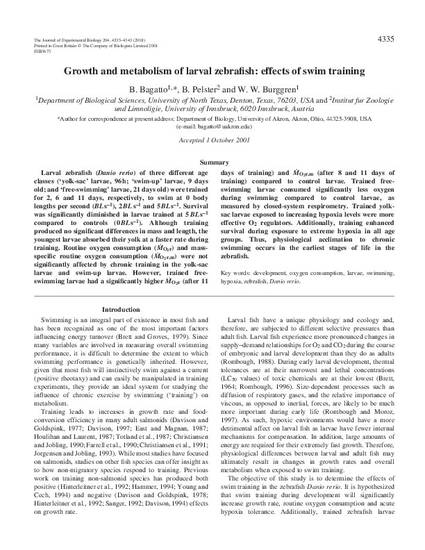
Larval zebrafish (Danio rerio) of three different age classes ('yolk-sac' larvae, 96 h; 'swim-up' larvae, 9 days old; and 'free-swimming' larvae, 21 days old) were trained for 2, 6 and 11 days, respectively, to swim at 0 body lengths per second (BL s(-1)), 2 BL s(-1) and 5 BL s(-1). Survival was significantly diminished in larvae trained at 5 BL s(-1) compared to controls (0 BL s(-1)). Although training produced no significant differences in mass and length, the youngest larvae absorbed their yolk at a faster rate during training. Routine oxygen consumption (M(O2r)) and mass-specific routine oxygen consumption (MO(2r,m)) were not significantly affected by chronic training in the yolk-sac larvae and swim-up larvae. However, trained free-swimming larvae had a significantly higher M(O2r) (after 11 days of training) and M(O2r,m) (after 8 and 11 days of training) compared to control larvae. Trained free-swimming larvae consumed significantly less oxygen during swimming compared to control larvae, as measured by closed-system respirometry. Trained yolk-sac larvae exposed to increasing hypoxia levels were more effective O(2) regulators. Additionally, training enhanced survival during exposure to extreme hypoxia in all age groups. Thus, physiological acclimation to chronic swimming occurs in the earliest stages of life in the zebrafish.
- development,
- oxygen consumption,
- larvae,
- swimming,
- hypoxia,
- zebrafish,
- Danio rerio
Available at: http://works.bepress.com/brian_bagatto/4/
